By Rick VanSickle
A Christmas gift from the federal government to give wine lovers a 13% tax break on wine came as shock to many in the Ontario wine industry.
Also in this Ontario Wine Report: New wine reviews for Vineland Estates, Divergence (a Marsanne-Roussanne-Viognier blend), a Gamay from Leaning Post, a Chardo from 2027 Cellars and a tasty Chardonnay from St. Hugo from Australia, plus we preview a charity auction by Iron Gate featuring $1.5 million in wines up for bids — with 24 lots of Canadian wine available.

“It kind of surprised us all,” said Vineland Estates winemaker Brian Schmidt of the proposed sales tax holiday for foods, restaurant meals, toys, beer, cider, wine and some light cocktails. The tax break will only run from Dec. 14 to Feb. 15. Schmidt said wineries are expecting “more clarity on this in the next couple of days.”
Bill Redelmeier, proprietor of Southbrook Vineyards in Niagara-on-the-Lake, was also taken aback by the news from Prime Minister Justin Trudeau. “The consumer will benefit,” he said. “We will have to display prices less HST. As of September, the rules were changed to allow prices to appear as (plus) HST, (plus) bottle deposit, and the Beer Store and Costco have already gone this way. I am guessing that few, including the LCBO, will go back to the old way after this period. We will likely try to rationalize prices after Feb. 15.”
Redelmeier wasn’t sure how the tax break would impact things like wine clubs or sales prior to or after the break period at retail locations. “We hope that it won’t affect sales, as we are already in the middle of our Black Friday sale, where the max discount is greater than 13%,” he said. What worries me is people expecting deliveries between Dec. 15 and Christmas, especially. if the posties are still out.”

One Niagara winery isn’t waiting until Dec. 14 for the 13% tax break to kick in. Adnan Icel (above), owner of Icellars Estate Winery, said that the tax will likely mean that “many people will hold on to their purchases until Dec 14, so we decided, we will start offering our wines, wine tastings, advent calendars HST free immediately by covering the HST until that start time ourselves, like a 13% discount on our products. Icellars will pay the HST on your behalf until Dec. 14.”
Other questions remain. How will wineries, restaurants, bottle shops and perhaps the biggest wine retailer in Ontario impacted by the tax — the LCBO — deal with pricing and taxes. Hopefully answers will be forthcoming in the days ahead.
Seven new wine reviews
from Vineland Estates
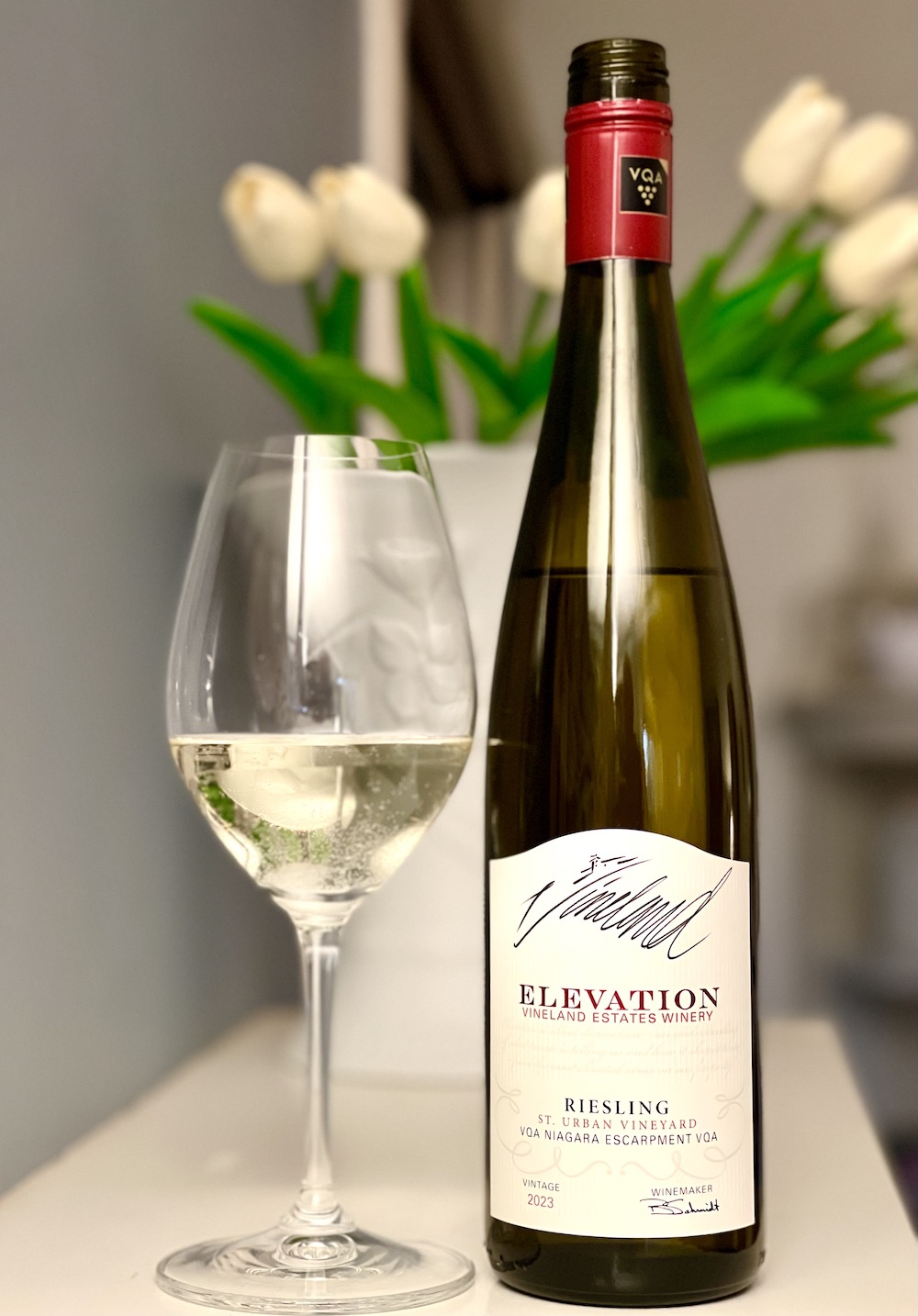
Vineland Estates Elevation St. Urban Vineyard Riesling 2023 ($23, 94 points) — One of Niagara’s benchmark Rieslings made in an off-dry style, the Elevation, rarely disappoints — with its profile and attractive price. The 2023 is another fine example of Bench Riesling with its exuberant nose of gushing lime, stony minerality, white peach, ginger notes, lemon zest, and crisp apple. It’s juicy and balanced on the palate with notes of peach, honeycomb, zippy lime, quince, ginger and stony/saline minerality with that yin-yang thing of sweet/tartness that builds in intensity through the vibrant finish. Can cellar through 2034.

Vineland Estates La Vidal Loca 2023 ($18, 89 points) — This fun, 100% Vidal Blanc is the creation of Brad Gowland, part of the winemaking team at Vineland Estates. He says this wine “will remind you of a Lime Rickey Martian, as it is citrusy, refreshing and simply out of this world.” The nose shows a tsunami of fresh and lively lime, green apples, melons and peaches. There’s subtle effervescence on the palate, which ignites the fruity melange of bright orchard fruits, tangy lemon-lime, and melons. Nothing too complicated here, just a cheerful, fresh white wine for everyday consumption.
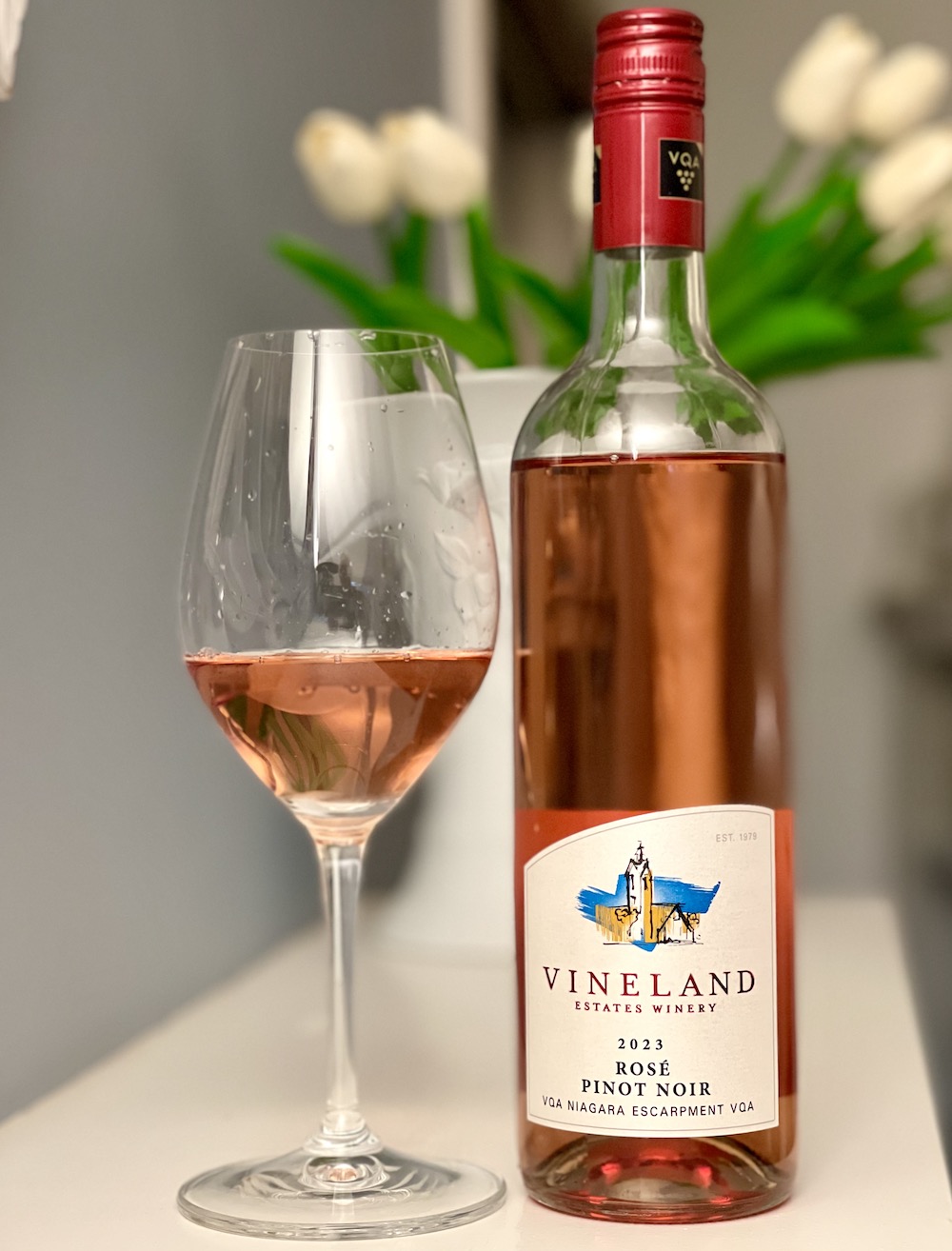
Vineland Estates Pinot Noir Rosé 2023 ($23, 90 points) — This is the very first rosé made from Pinot Noir from Schmidt. It shows a lovely rhubarb colour in the glass with the full melange of red berries, red currants, and a touch of citrus. It’s fairly dry and fresh on the palate with succulent raspberries, cherries and a zesty finish from the mouth-watering acidity. A lovely, all-season rosé.
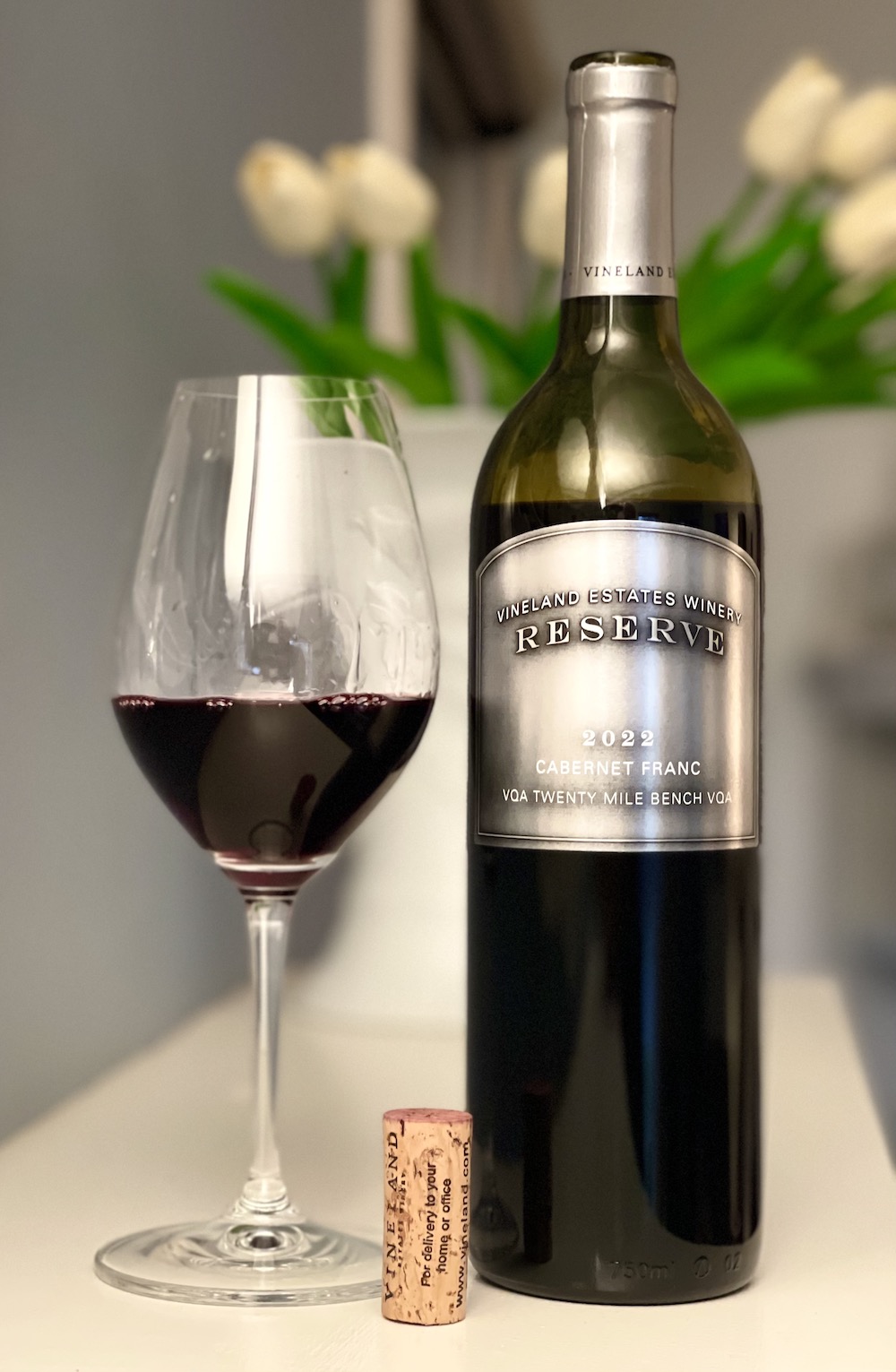
Vineland Estates Cabernet Franc Reserve 2022 ($60, 94 points) — If you could build a quintessential Niagara Cabernet Franc each vintage, this reserve could be your prototype. Winemaker Brian Schmidt has an affinity for this grape and makes it in several levels and styles from the popular entry level wine to the Legacy, the top bottling that consists of several vintages of CF. The reserve spends 12 months in oak and is finished with 14% abv and comes from the estate’s Bo-Teek Vineyard. It has a floral nose with persistent notes of forest floor, brambly raspberries, Morello cherries, black currants, anise, subtle/integrated herbaceous notes, and lifted oak spice accents. It all ties together on the palate with grippy tannins hugging an ocean of red and dark berries, licorice, aniseed, dried herbs and earthy/savoury notes and then a long, echoing and polished finish. Such a fascinating Cabernet Franc that will improve and impress for another decade in the decade.
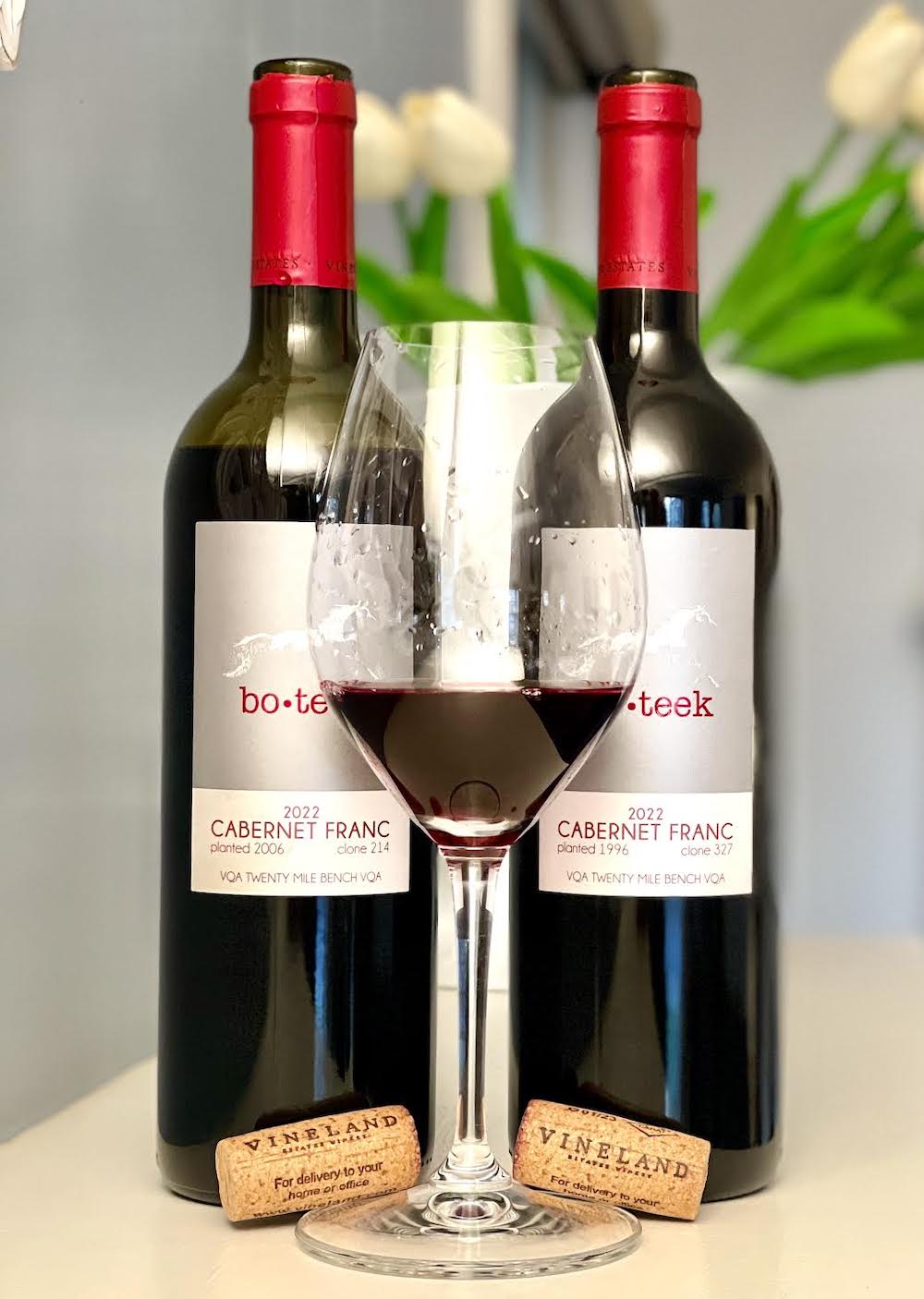
Vineland Estates Bo-Teek Vineyard Clone 214 Cabernet Franc 2022 ($40, 92 points) — The Clone 214 and Clone 327 side-by-side bottlings from the Bo-Teek Vineyard is something Schmidt and his winemaking team have done for a few vintages now. We are getting a clearer idea of the differences are between the clones. The 214, planted in 2006, is a bit more muscular than the 327, and straddles the line between full-blown fruity and a more earthy profile on the nose. It shows black raspberries, dark cherries, anise, cassis and savoury notes with lifted spice accents. It’s mouth filling on the palate with a smooth texture followed by a melange of ripe red berries, aniseed, pine nuts, ripe, chewy tannins, pepper notes, spice and a long, finessed finish. Can cellar to 2034.
Vineland Estates Bo-Teek Vineyard Clone 327 Cabernet Franc 2022 ($40, 93 points) — The 327 is more elegant on the nose with richer, deeper layers of red berries, anise, umami/savoury notes, roasted herbs, fine oak spice and underpinned with charred cedar. The tannins are firmer with darker berries, anise/licorice notes, dried herbs, fine oak spices, and electric acidity keeping it fresh and lifted through a long finish. Can age through 2034.
2027 Cellars goes west for this
tasty single-vineyard Chardonnay
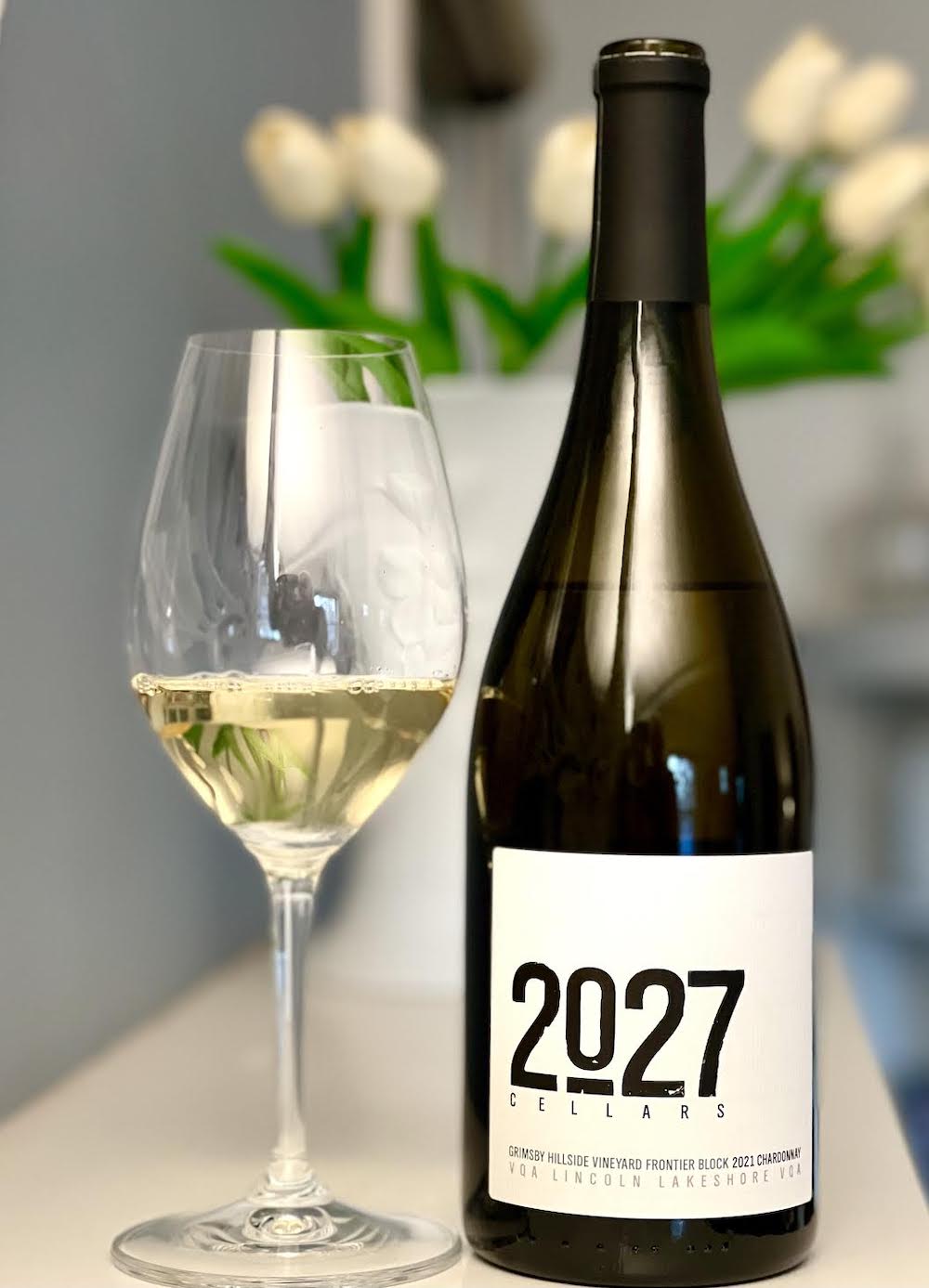
2027 Cellars Grimsby Hillside Vineyard Frontier Block Chardonnay 2021 ($40, available at Niagara Custom Crush Studio, 93 points) — The Grimsby Hillside Vineyard in the far western frontier of the Lincoln-Lakeshore sub-appellation, where 2027 winemaker/owner Kevin Panagapka sources this Chardonnay, has quickly become a favourite for Niagara negociants. The fruit for the 2027 version is hand harvested, whole cluster pressed, wild fermented and aged for 18 months in 20% new Burgundian oak. The nose starts with a creamy lemon chiffon note, almost brioche-like, followed by ripe pear, yellow apple, bergamot, stony/saline notes and toasted vanilla spices. It has a luxurious texture on the palate that sets the stage for a melange of rich and savoury stone fruits, lemon curd, flinty minerality, elegant spices and a lifted, long and finessed finish. Can cellar through 2030.
A rare Rhone white blend from
Divergence waiting for VQA approval
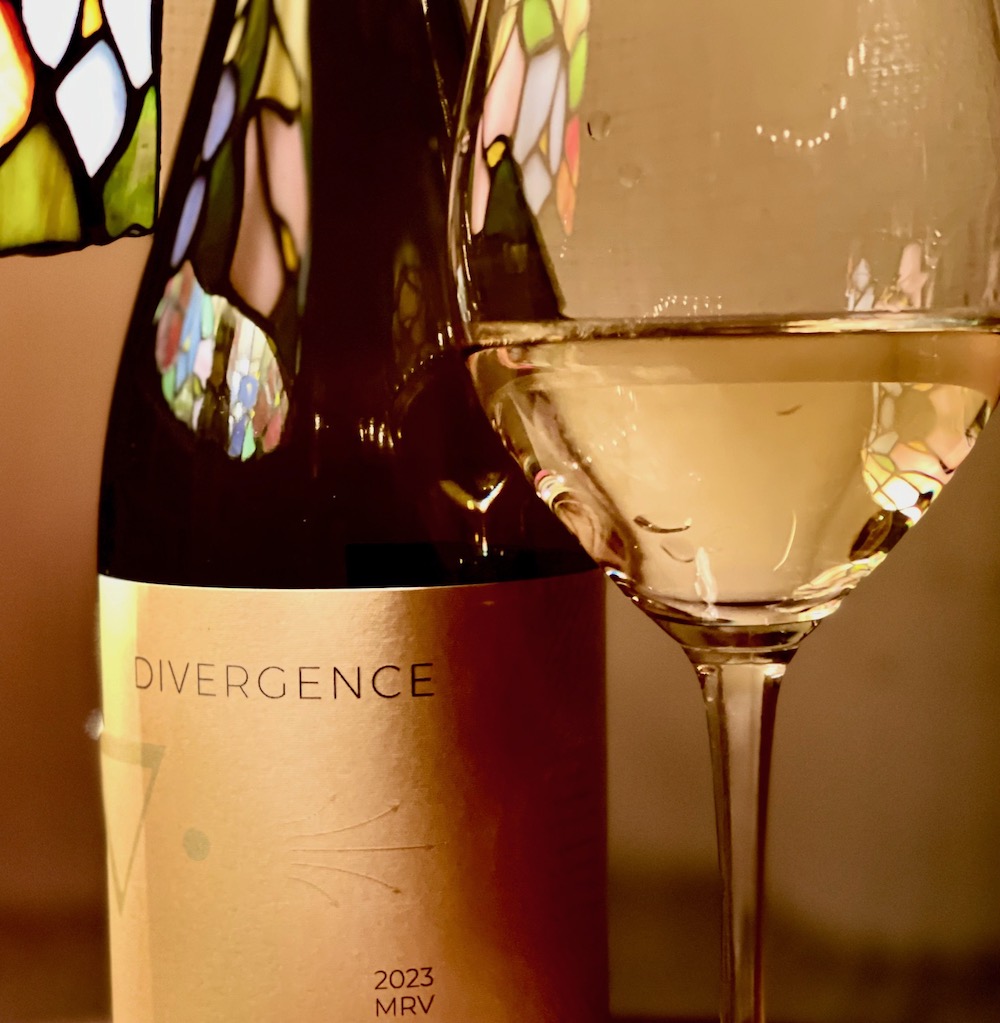
Divergence MRV 2023 ($33, released through Collab Wine and Beverage when Roussanne gets VQA approval, 94 points) — While Divergence brand owner and winemaker Jeff Moote waits for the provincial government to basically rubber stamp Roussanne as a VQA-eligible grape, which makes up 32% of this Rhone variety blend, this wine will just keep getting better in the bottle. There are exciting times ahead for fans of this style of wine that also includes 39% Marsanne and 29% Viognier from the Bock Vineyard on the St. David’s Bench. Black Bank Hill is also waiting on approval for Roussanne, which somehow wasn’t approved along with Marsanne years ago, and is part of a blend now waiting to be bottled. “It will be cool to be one of the first with a Roussanne containing wine in VQA, along with Black Bank Hill as likely the other that will have one ready to go as soon as we get the green light,” said Moote. The Viognier was pressed separately, while Marsanne and Roussanne were pressed together on top of the Viognier skins. It was all whole cluster pressed, juice was settled and racked to barrel for fermentation and aging for 10 months (no new oak) before blending and bottling. The Rhone Rangers in Niagara, small in number, but big on flavour, are sneaking up on us. This a more traditional three-variety Rhone blend that is just gorgeous, exciting even, with a generous, rich nose of apricots, guava, orange zest, saline minerality in spades, wild herbs, marzipan, lemon curd, and a touch of vanilla spice. It has a creamy texture on the palate with succulent tropical fruits, apricot tart, lemon squares, orange peel, cantaloupe, wild honey, saline freshness and a rounded, luxurious finish with mouth-watering acidity. These Rhone varieties are going to shake up the industry if this is an indication. Lovely wine.
One more from Leaning Post
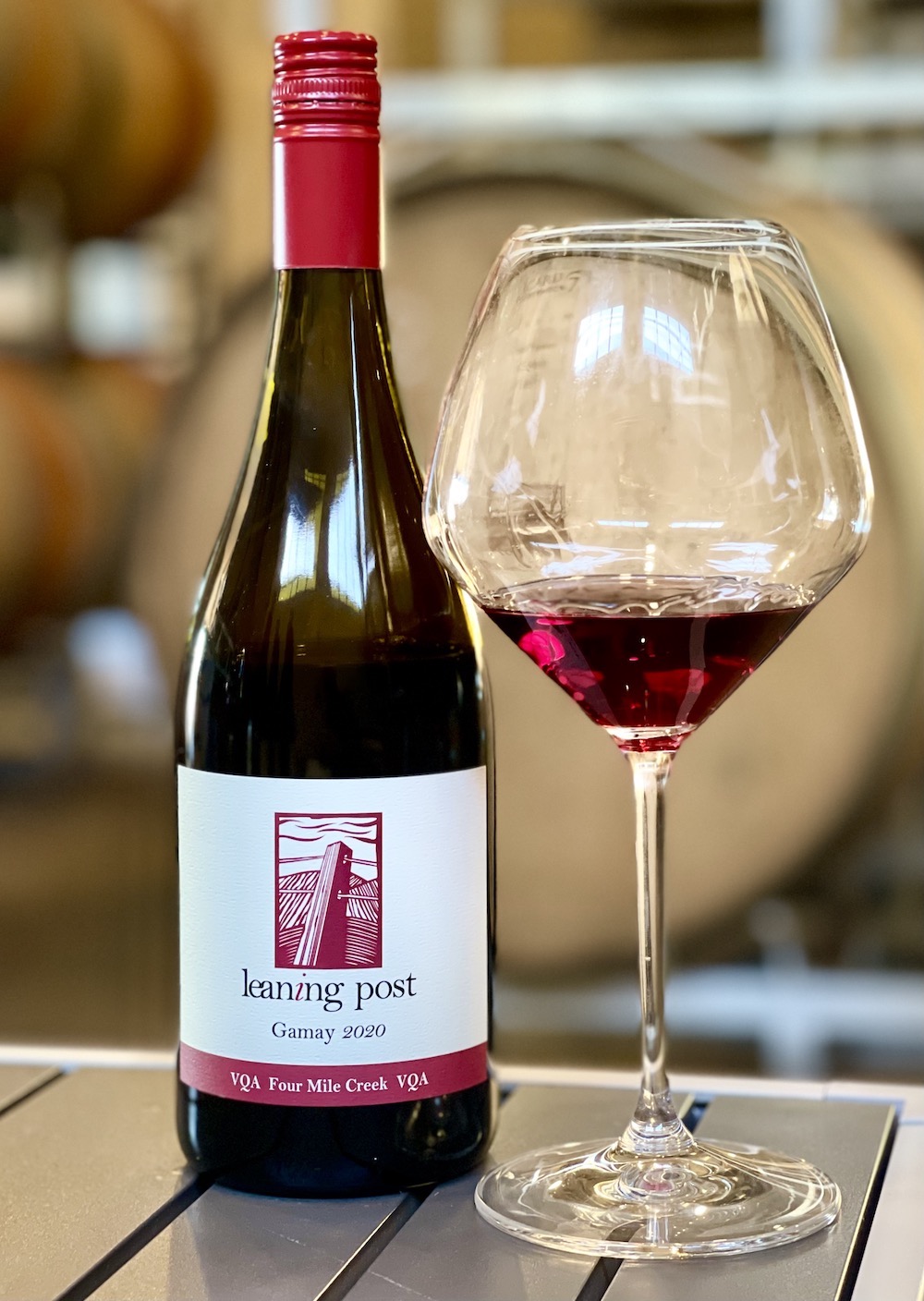
Leaning Post Gamay 2020 ($26, 92 points) — The 2020 Gamay is from the Huebel Creek Vineyard in the Four Mile Creek sub-appellation farmed by the Oppenlaender family. It’s concrete fermented and concrete/neutral oak aged for 10 months. The nose is redolent of purple plums, ripe red berries, juicy wild blueberries, black peppercorns, and a hint of spice. The dark and red fruits on the palate are juicy and ripe and joined by earthy/savoury notes, some wild herbs, subtle spice notes and a lifted, long finish. Can cellar through 2028. Note: I somehow missed they this review in my note pad for our Leaning Post report last week.
A tasty Chardonnay from Down Under
Note: This wine is available now at Vintages stores throughout Ontario.

St. Hugo Eden Valley Chardonnay 2023 ($40, 92 points) — The fruit for this Eden Valley Australian Chardonnay is 60% whole-bunch pressed with fermentation in a mixture of new and older French oak barrels. An interesting Chardonnay from the land of Oz, with a lot more finesse and restraint than what we would expect. The nose shows a lovely salinity to start with lemon zest, fresh green apple, nectarine, white peach and just a hint of spice. It’s vibrant and fresh on the palate with a melange of orchard fruits, tangy citrus, chalky notes, flint and mouth-watering acidity on a lifted finish. Nicely balanced Chardonnay from Australia.
Raise a glass for a good cause
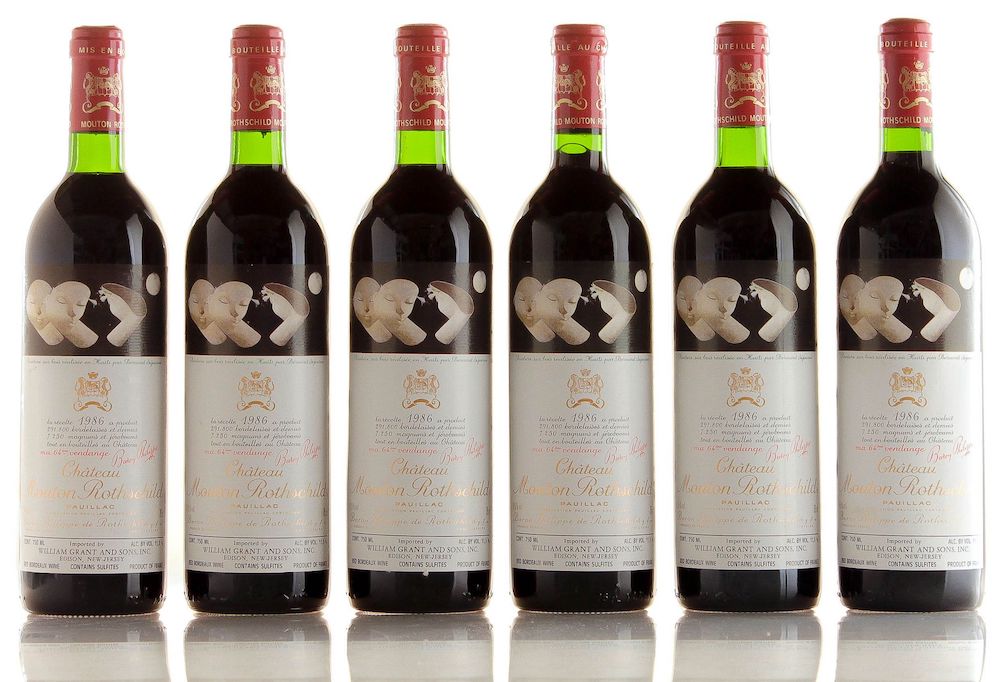
Iron Gate wine auctions has announced the inaugural Benefit Fine Wine Auction, a record-setting event uniting wine lovers and philanthropists in support of six Canadian charitable and cultural organizations.
This groundbreaking auction, the largest of its kind ever held in Canada, will feature nearly 1,000 exceptional lots of fine wine, estimated at $1.5 million in value, generously donated by supporters of Cystic Fibrosis Canada, Canadian Opera Company, JAZZ.FM91, the Toronto Symphony Orchestra, Timothy Eaton, Memorial Church and Second Harvest.
The auction, which runs online here from Nov. 26 (today) to Dec. 3, is one-of-a-kind event that invites bidders to indulge their passion for fine wine while making a meaningful impact.
Warren Porter, president of Iron Gate said: “Since our inception we have been committed to giving back to our community. In previous years, we held separate online auctions for a number of organizations. By consolidating efforts into one marquee event, we’re amplifying our reach and maximizing support for these incredible organizations.”
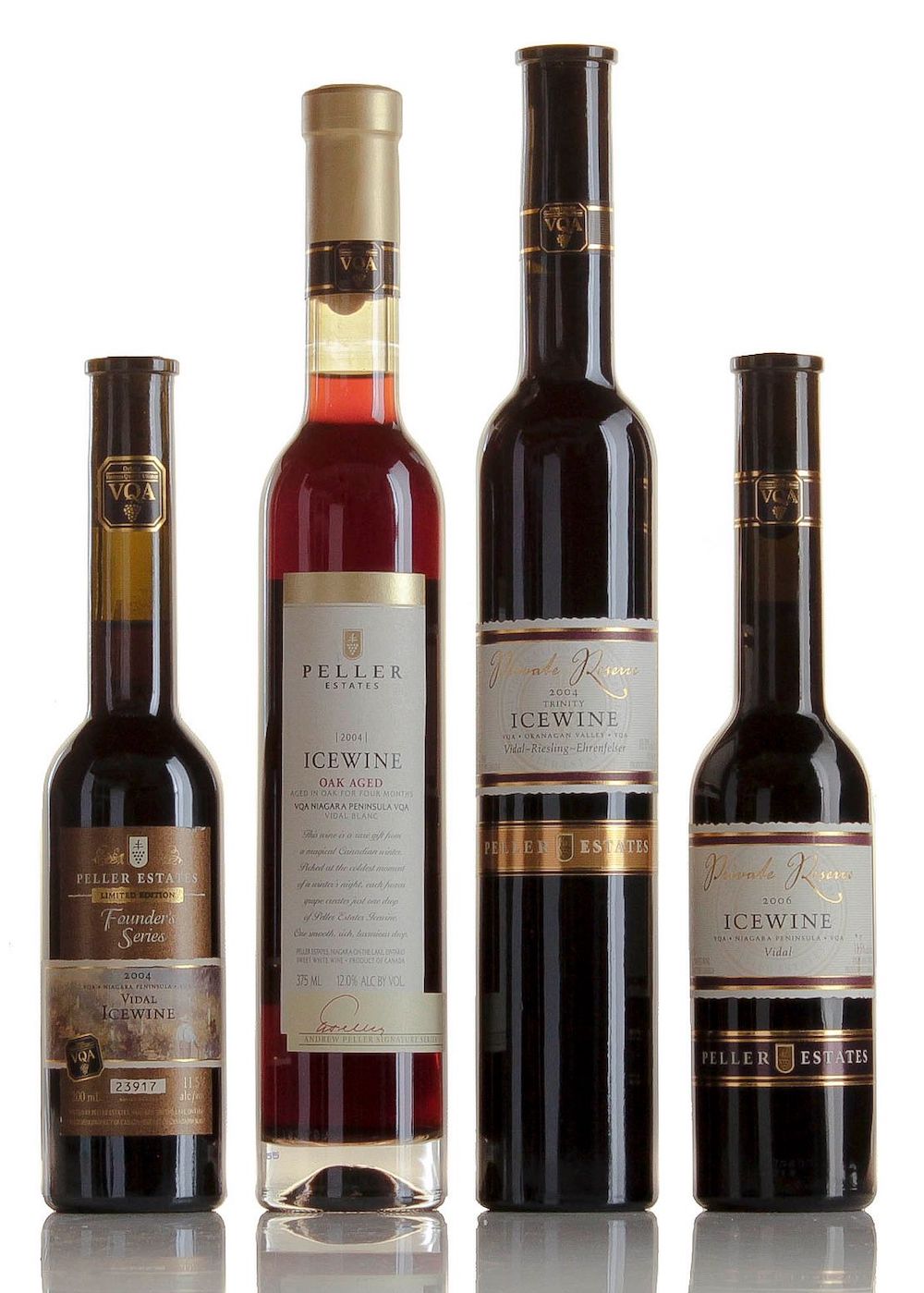
The auction showcases rare and iconic wines from the world’s premier regions, including grand cru Burgundy, classified growth Bordeaux, Italian Super Tuscans, Vintage Port and California cult classics. There is also an impressive 24 lots of B.C. and Ontario wines featuring showpiece Okanagan wines sush as Osoyoos Larose, Culmina and Burrowing Owl to some nicely aged Niagara wines such as Inniskillin, Pillitteri, dozens of aged icewnes, and an interesting large format lot from Henry of Pelham that includes a magnum of reserve Baco Noir from 1998.
As a charitable auction authorized by the AGCO, bidders pay no sales tax or buyer’s premium, ensuring every dollar stretches further for the benefiting charities.
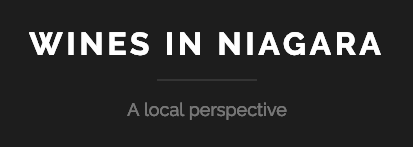








Comment here